
 |
Eager Space | Videos by Alpha | Videos by Date | All Video Text | Support | Community | About |
|---|

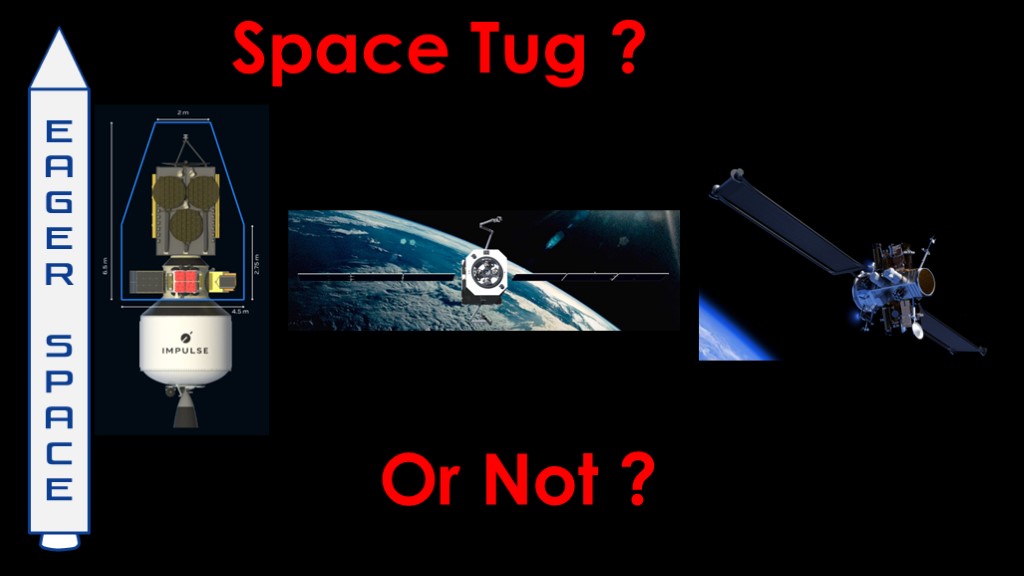
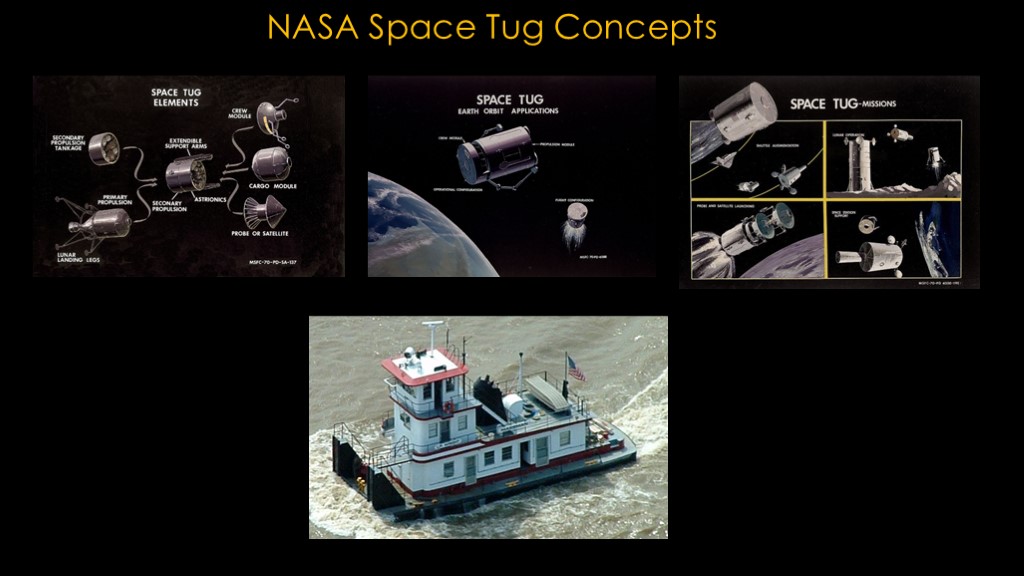
After Apollo, NASA came up with a lot of concepts that featured Space Tugs.
The idea is that - like tugboats on the water - you would be able to use a space tug to move spacecraft or satellites around...
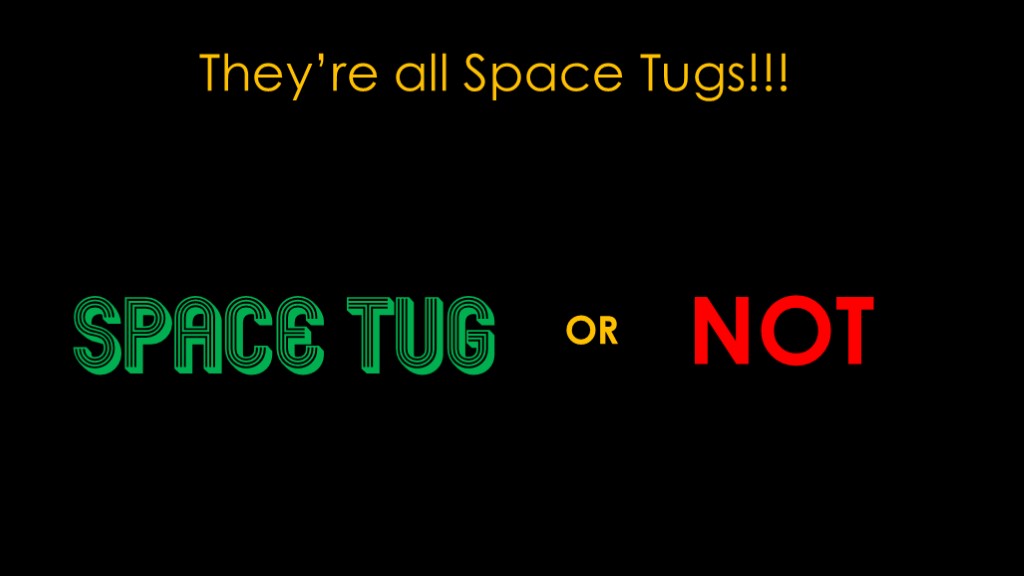
I've recently noticed that the term "Space Tug" has been co-opted to mean pretty much whatever journalists want it to mean.
So I thought it would be fun to play a game, "Space tug, or not". We'll take a look at a number of systems that people have asserted to be space tugs, you decide whether a system is a space tug or, and then I'll tell you why you're wrong. Or right, as the case may be.
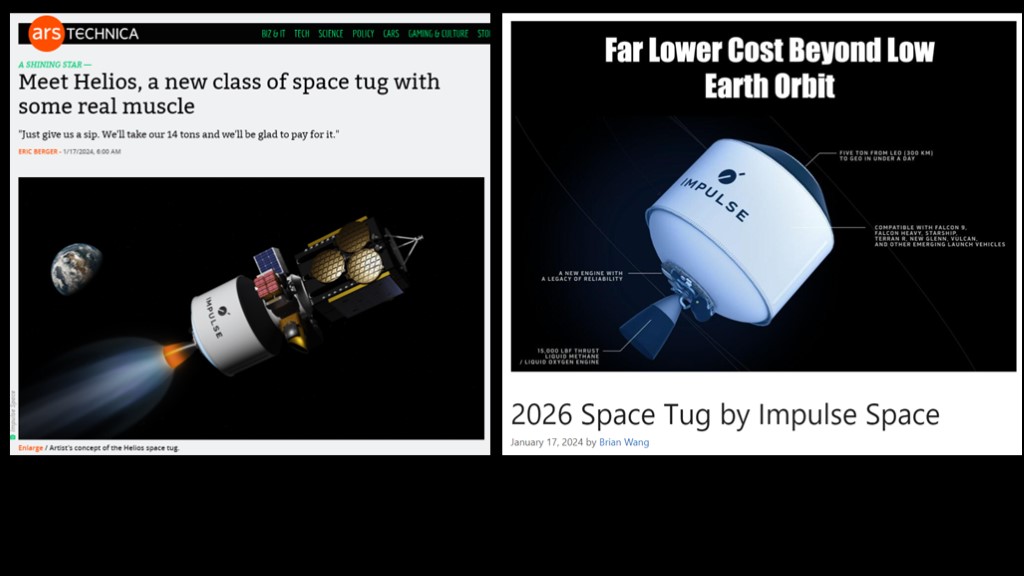
Our first contestant is Helios, a product of Impulse space. There were nicely two articles referring to it as a space tug.
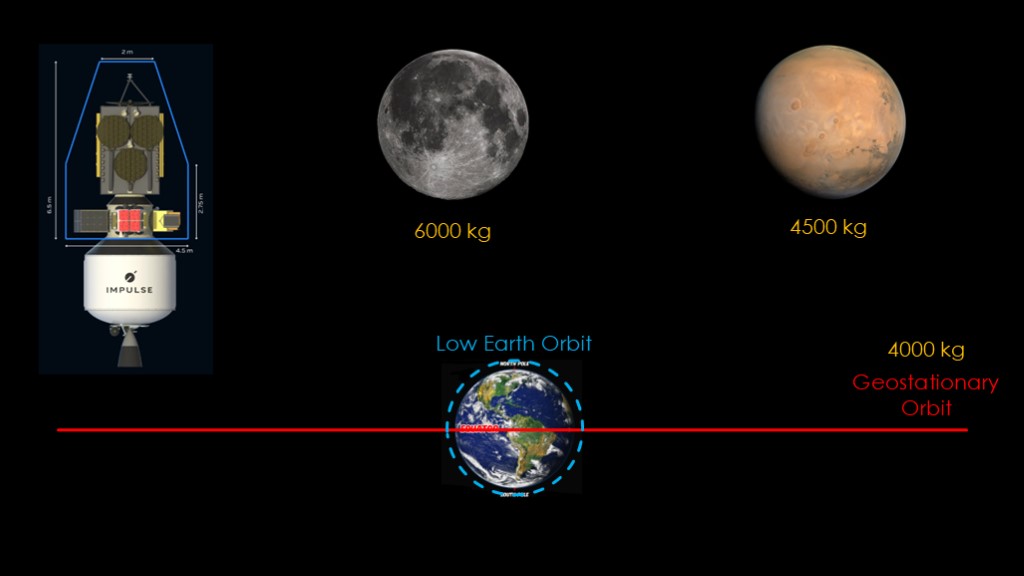
The point of Helios is to act as a third stage for payloads.
You launch Helios with its attached payload into low earth orbit using whichever rocket is convenient. Once you get into low earth the helios stage ignites and takes the payload to its destination
It can send 4000 kilograms to geostationary orbit, 6000 kilograms to the moon, or 4500 kilograms to Mars.
Is Helios a "space tug"?
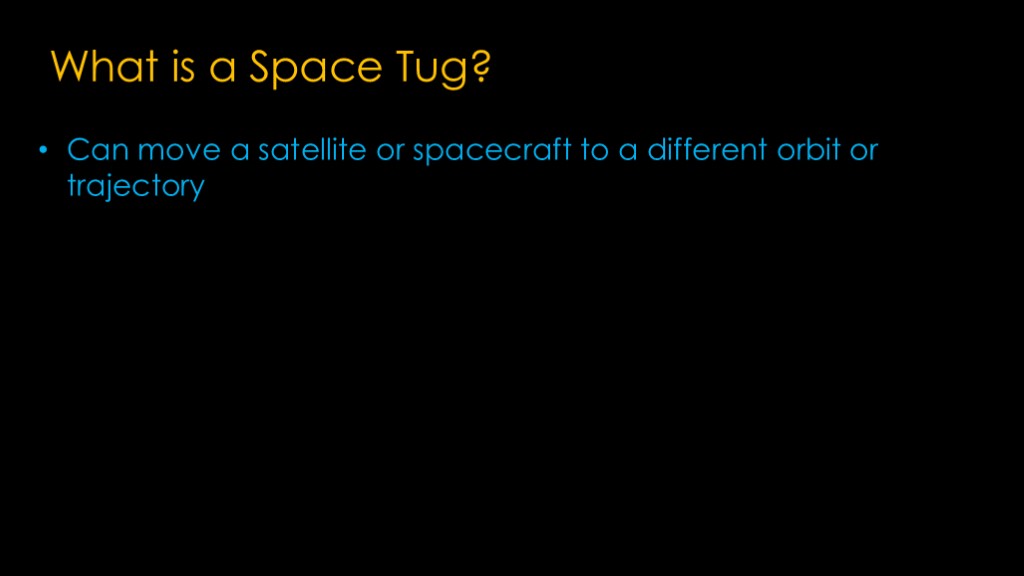
It might help if we talked about what makes a space tug.
Tugboats push ships and barges around, so space tugs will need to do the same in space - they'll need to move a satellite or spacecraft to a different orbit or trajectory.
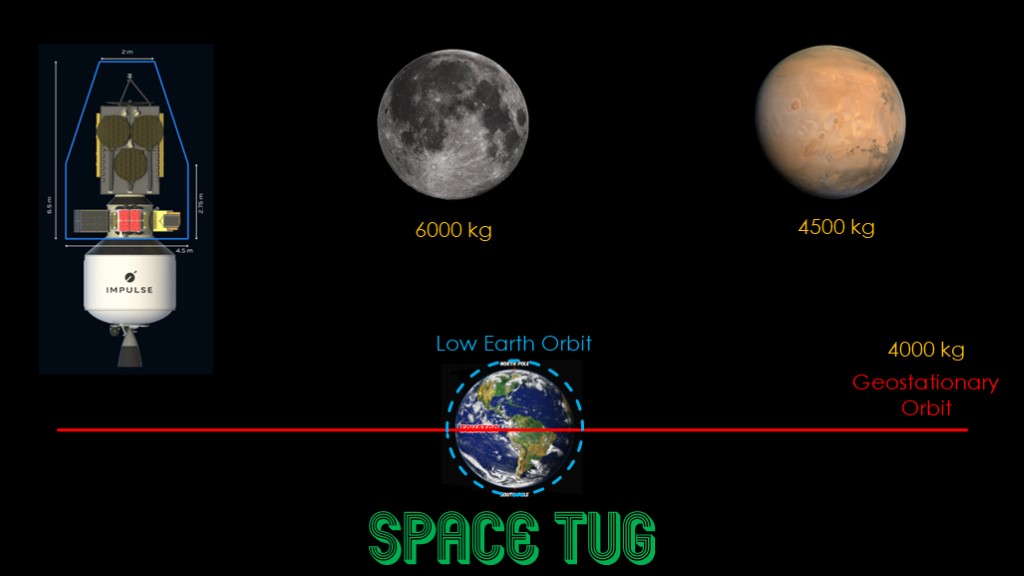
So, based on that definition, is helios a space tug? Do you think yes, no, or somewhere in between?
My answer is a solid yes - it meets the definition since it moves satellites or spacecraft to a different orbit.
But then I got thinking...
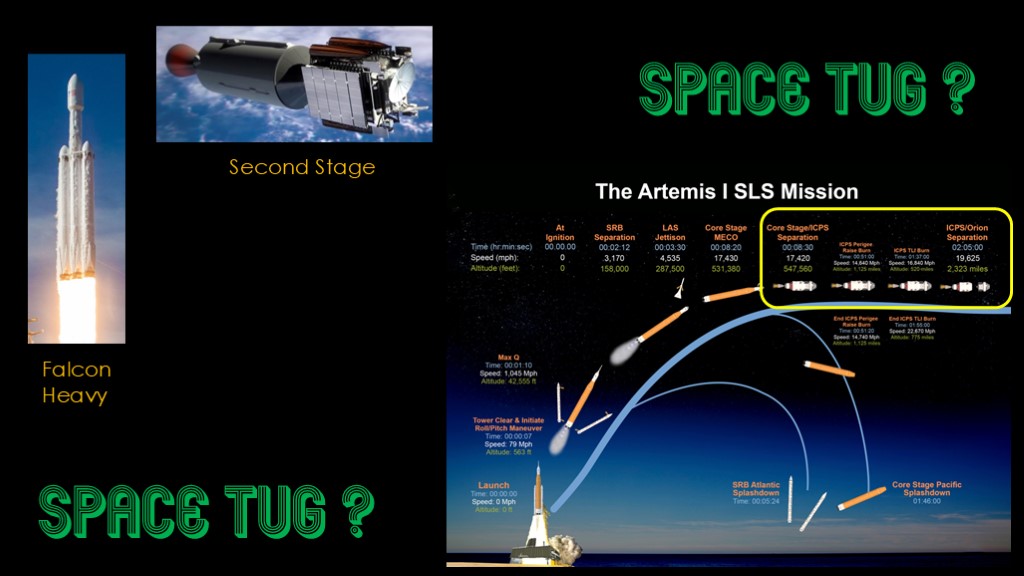
When Falcon Heavy flies a mission to put a satellite directly into geostationary orbit, the second stage gets into earth orbit, coasts for a number of hours, and then performs a burn to move its satellite payload to a different orbit?
Does that make the Falcon Heavy second stage a space tug?
The SLS rocket used on Artemis missions uses the boosters and core stage to put the ICPS upper stage into orbit. That stage will then ignite to get out of the initial orbit and into the trajectory to the moon.
Does that make the ICPS upper stage a space tug?
I would argue that neither are a space tug, which means our definition is incomplete.
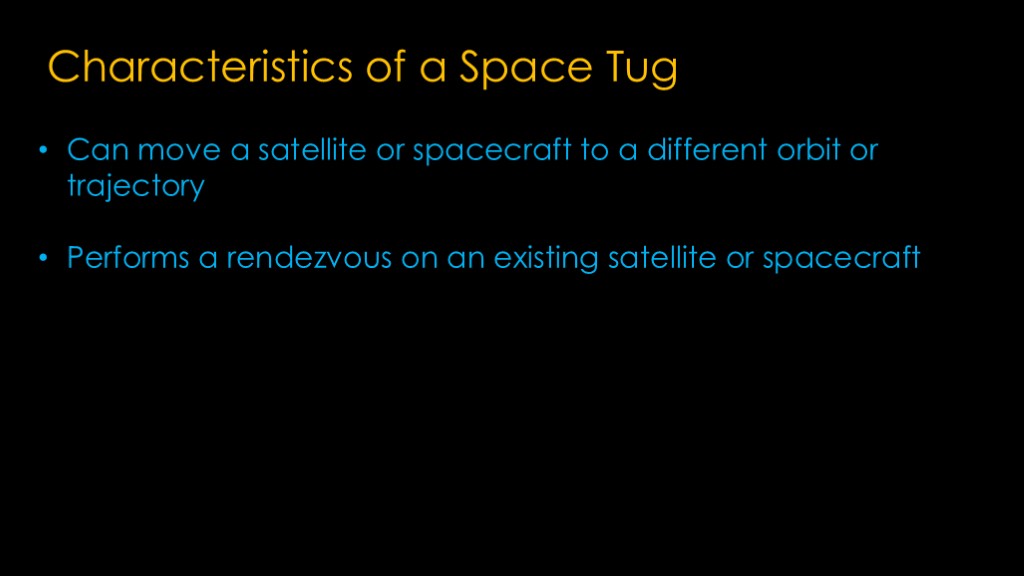
By analogy with a tugboat, I think inherent in the definition of a "tug" is that it's an independent vehicle that will rendezvous with an existing satellite or spacecraft.
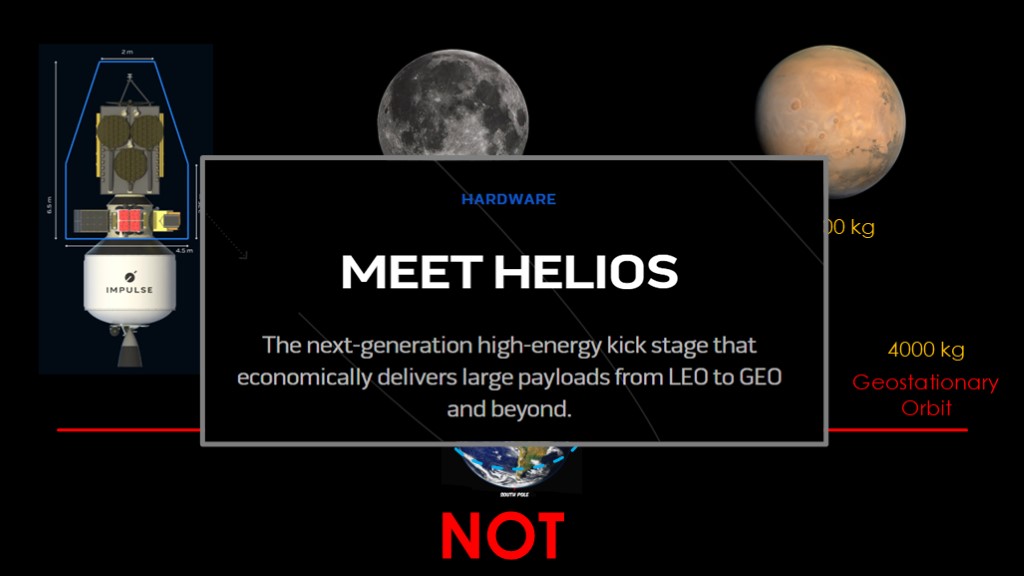
My assertion is therefore that Helios is *not* a space tug. It's just an additional stage that is used to send a payload to a higher orbit.
If only there were a term for an third stage that gives an extra kick to a payload.
If we look at what impulse aerospace says about helios, they describe it as a high-energy kick stage, which is a more precise and meaningful term.
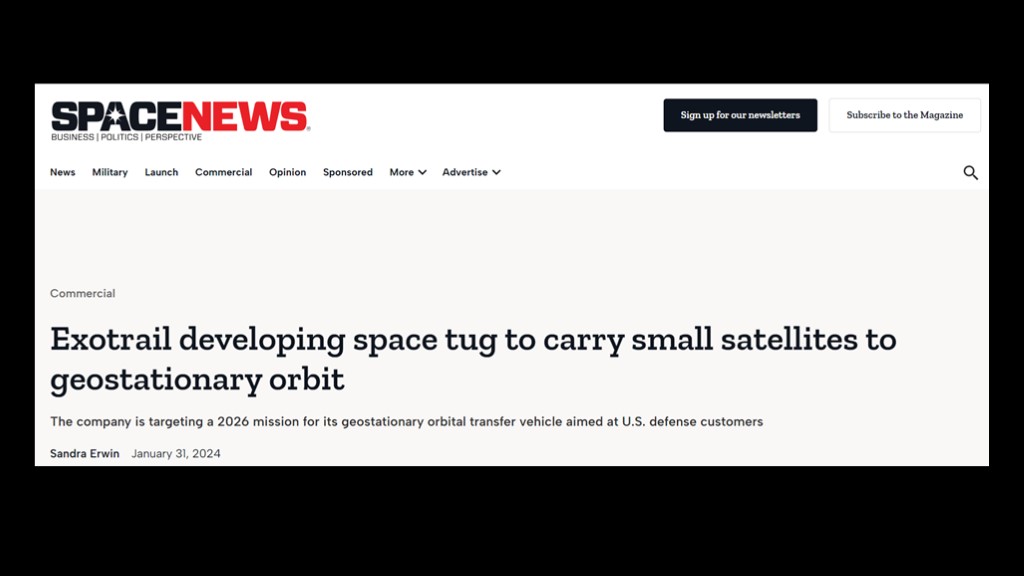
Here's our second contestant, talking about a company named Exotrail developing a space tug to carry small satellites to geostationary orbit.
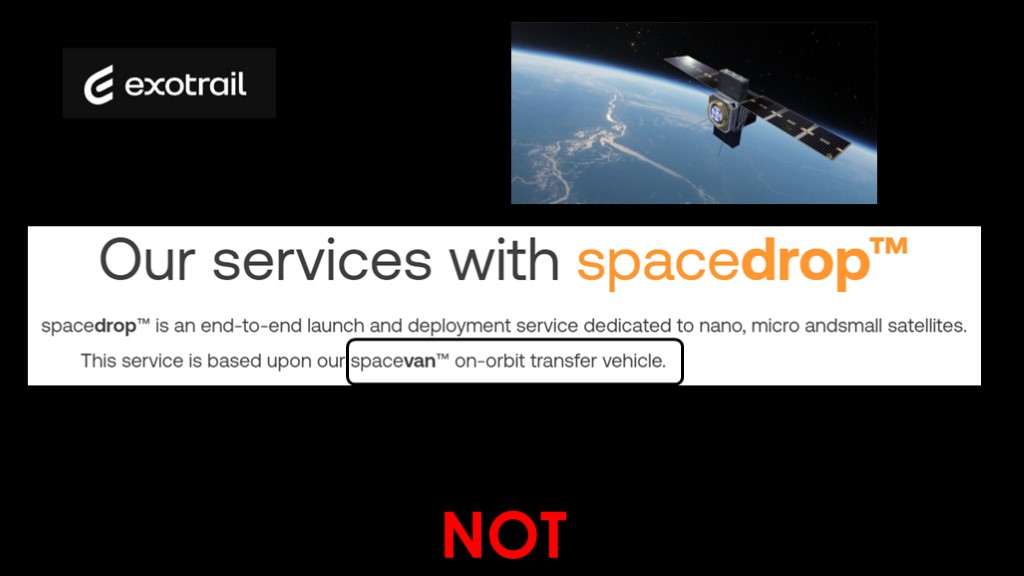
There isn't a ton of detail on their website, but they do have a minimal description in which they talk about providing a launch and deployment service using their spacevan on-orbit transfer vehicle.
AFAICT, the scenarios are all about doing this as part of the launch process.
Like Helios, not a space tug.
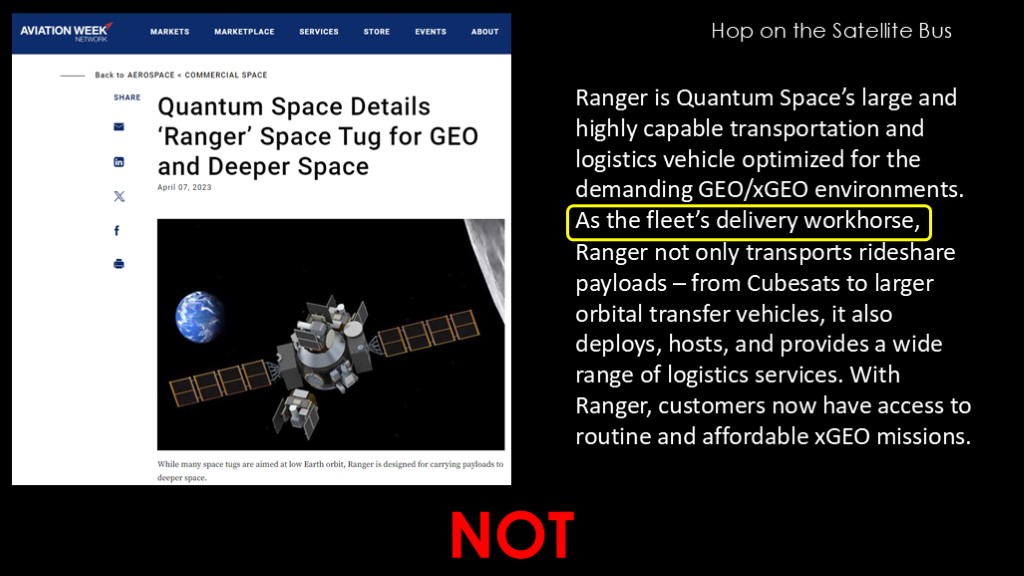
Quantum space is next.
They describe their "space tug" as a delivery workhorse. I would describe it as an "adaptable satellite bus" that supports a bunch of different scenarios, where delivering satellites is only one of those.
For more info on Satellite buses, see my recent video, Hop on the satellite bus.
Once again, not a space tug.
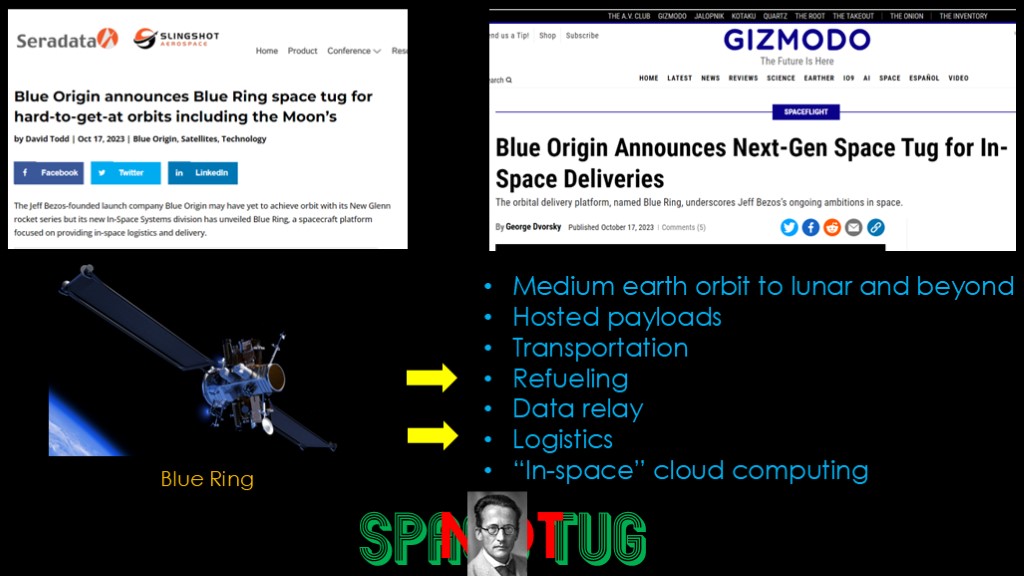
Blue Origin has entered the market with their Blue Ring. They have a long list of features:
(read)
To the extent that they provide refueling and logistics, there's a good argument to be made that they are a space tug.
On missions where they don't do that - especially if they are just doing hosting of a payload - there's a good argument that they are just a satellite bus and therefore not a space tug.
Blue ring is schroedinger's spacecraft - you don't know whether it's a space tug or not you open the payload fairing after launch
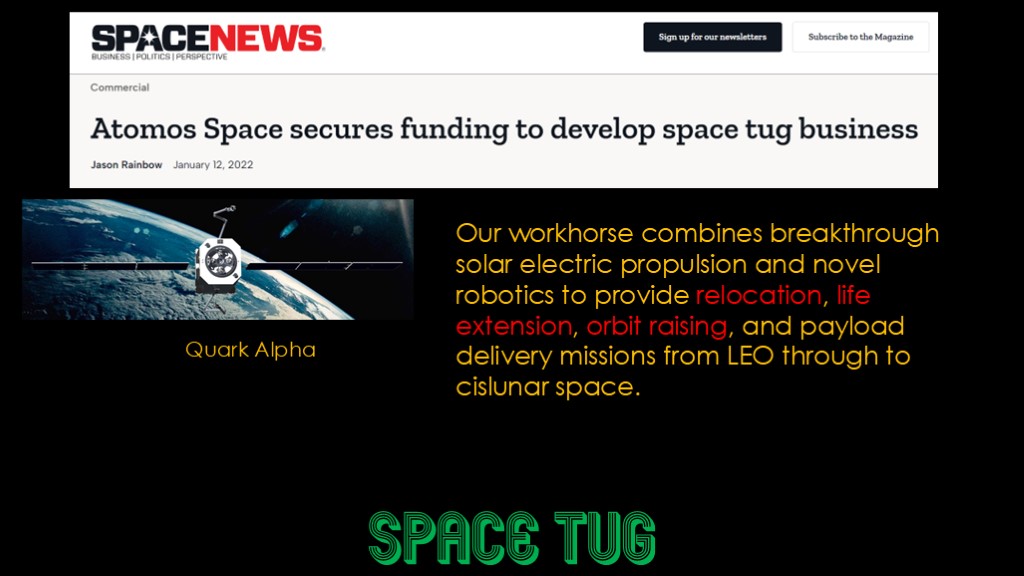
Automos (ah-tah-mos) space is working on their quark series of vehicles, and this is what they say:
(read)
Relocation, life extension, and orbit raising put them firmly in the tug category.
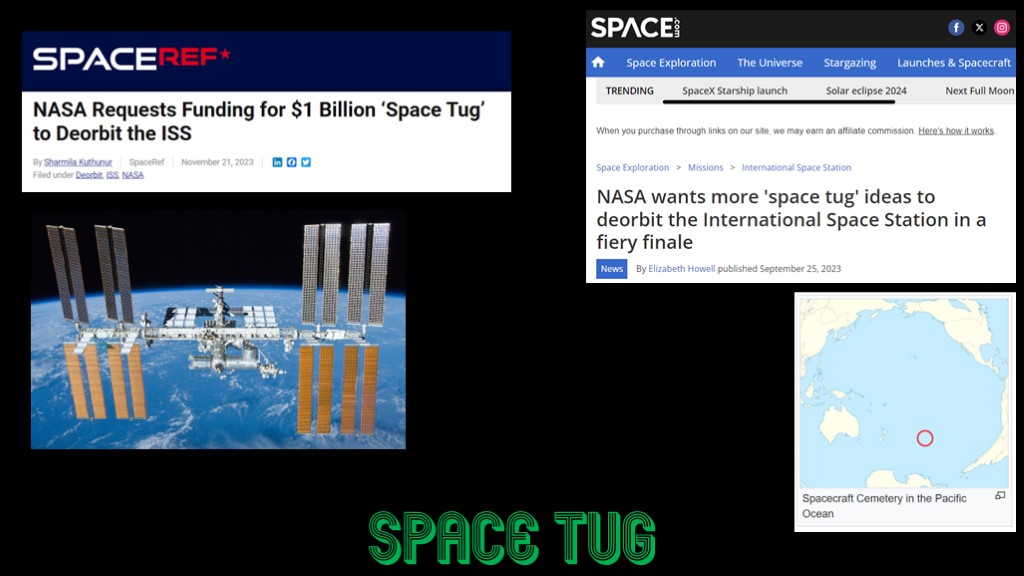
NASA is currently exploring alternatives for a vehicle to journey to the international space station at the end of its mission - currently 2030 or so - latch onto it, and slow it down to deorbit it and toss it into the pacific ocean, probably in the spacecraft cemetery that already hosts 263 spacecraft.
This one is probably the easiest one in our quiz - it's very obviously a space tug.
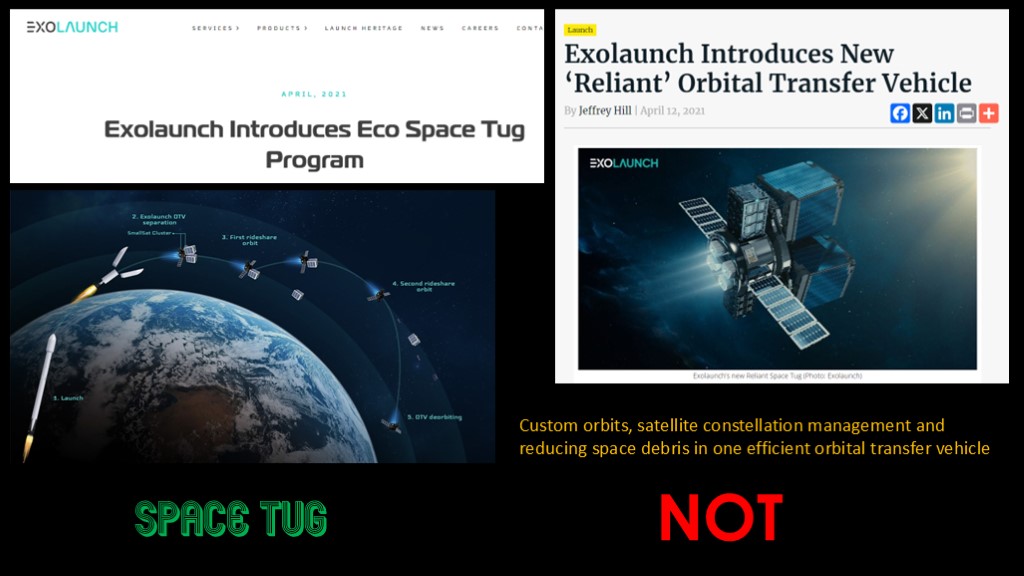
Exolaunch announced their space tug program, but the press for it refers to it as an orbital transfer vehicle (though there's a little caption on the picture that says "reliant space tug".
Their graphics show it doing multiple satellite deployment to different orbits, and their vehicle description says this:
Read.
The first two are all about deployment, but reducing space debris could be tug like. I'll call this not a tug but with tug-like aspirations.
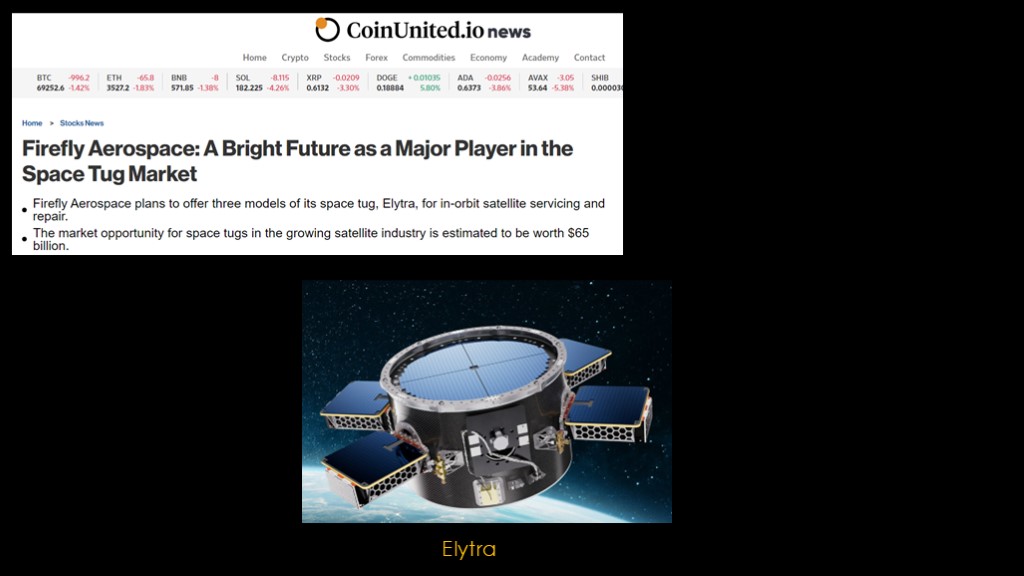
Firefly aerospace offers a new product named El-it-ra
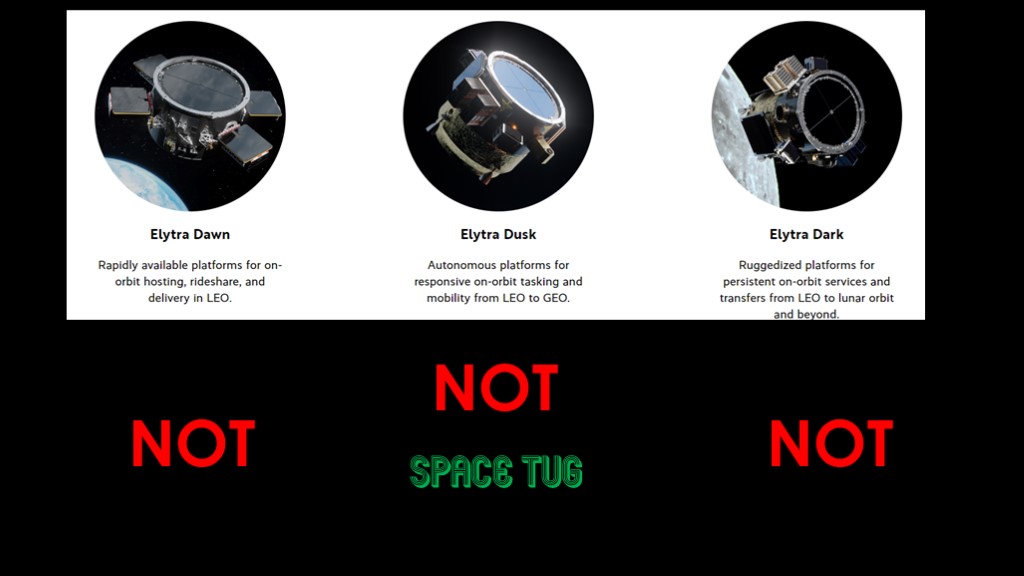
Elytra has three levels. Elytra dawn is about hosting, rideshare and delivery. All useful things, not space tug things.
Elytra Dark is about on-orbit persistence and going beyond earth orbits. Also not space tug things.
Elytra Dusk is a bit of a wild card. The high level items listed here say "not a space tug". But they also talk about relocation, deorbit, and logistics, which are quite a bit more space tuggy.
I'll give it a minor in space tug, it's a "if somebody asks, I guess we could do those things as well".
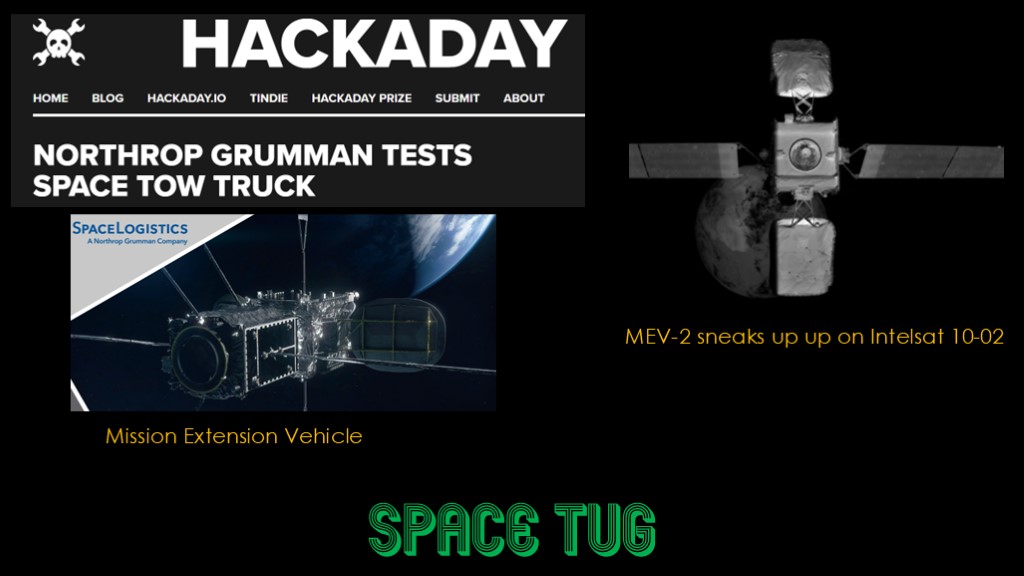
Northrop Grumman has an interesting vehicle. It navigates to geostationary orbit, finds the satellite that has run out of fuel, attaches itself to the satellite and takes over the station keeping for the satellite, keeping it operational. This is a big deal for satellites like this as they are extremely expensive to replace. Here's a picture from their second mission as they sneak up on Intelsat 10-02 in geostationary orbit.
The have future versions planned that would allow one launch to service more than one satellite.
Absolutely a space tug.
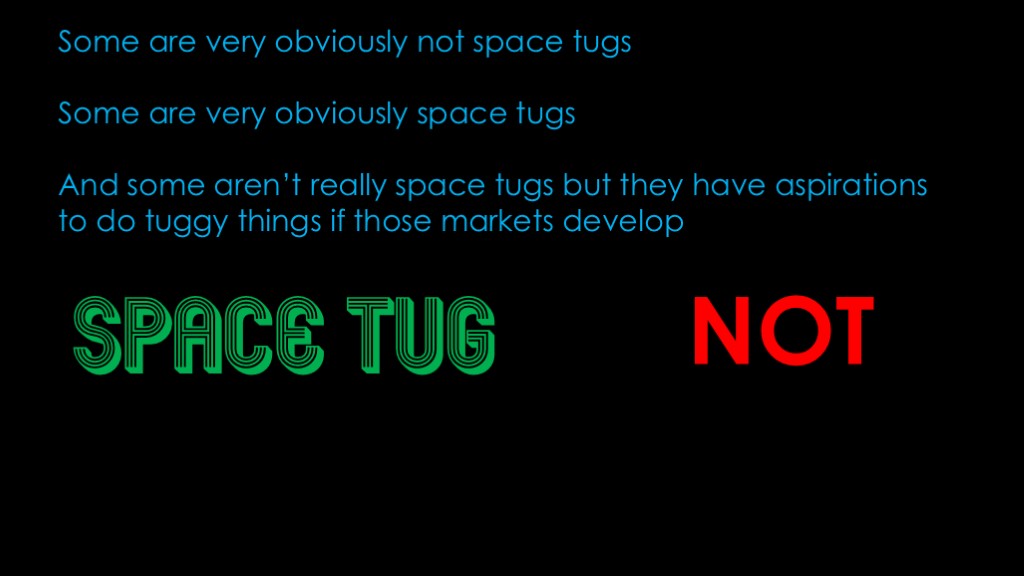
What did we find out...
There are many products described as space tugs
Some are very obviously not space tugs
Some are very obviously space tugs
Some aren't really space tugs but have aspirations to do tuggy things if those markets develop
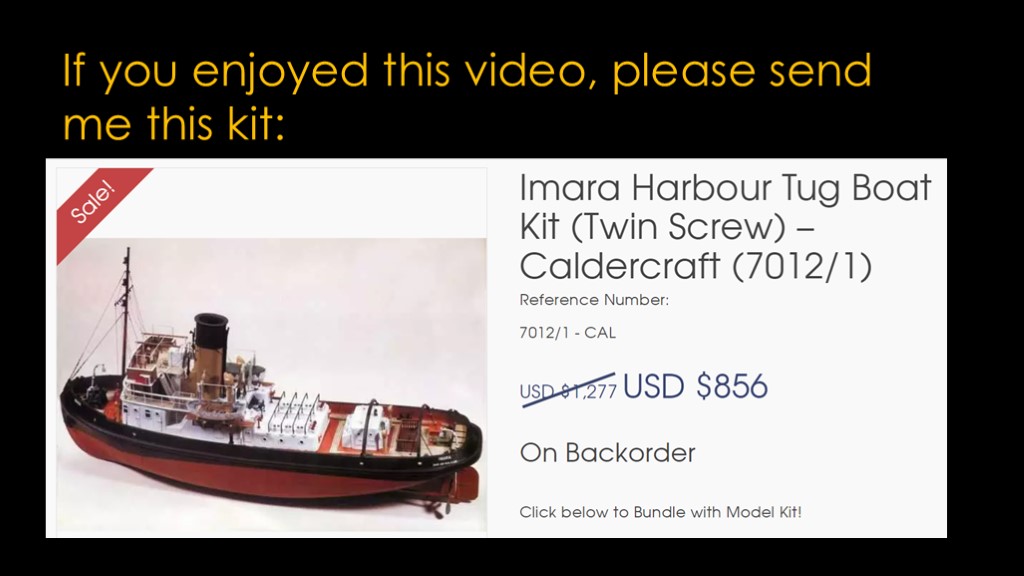
If you enjoyed this video, please send me this Imara Harbour tub boat kit, a bargain at more than 30% off.